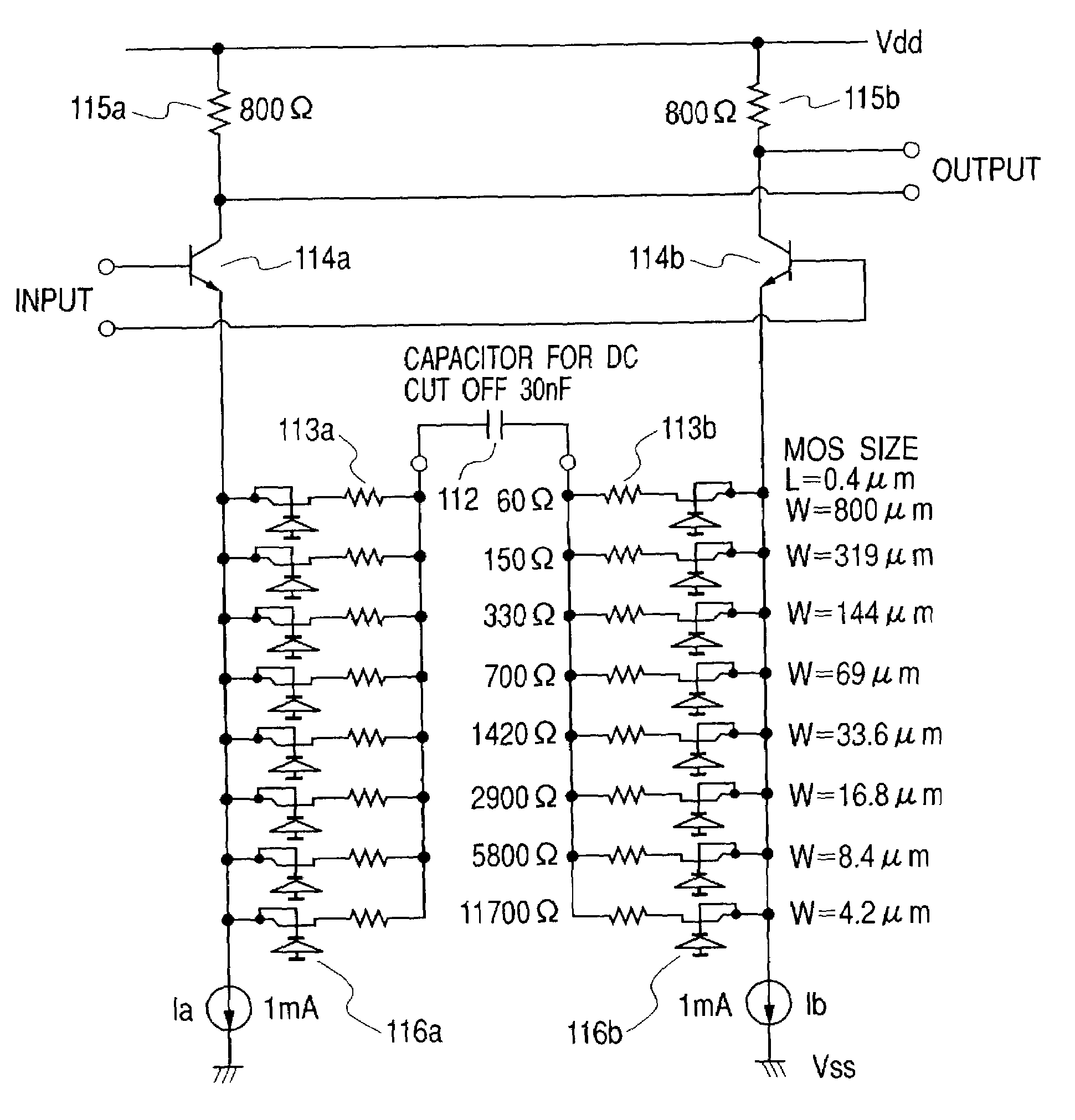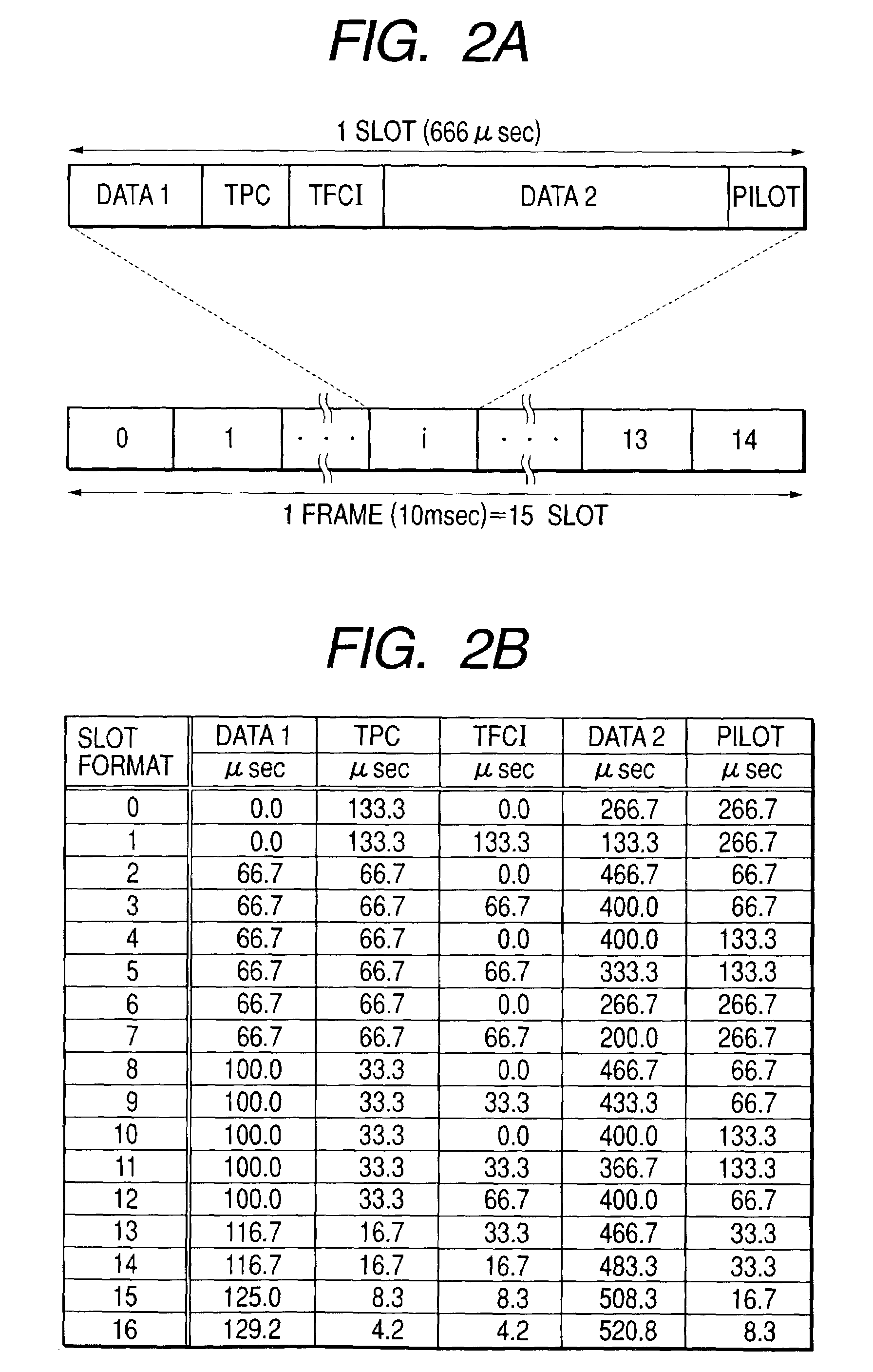Wireless communication receiver
- Summary
- Abstract
- Description
- Claims
- Application Information
AI Technical Summary
Benefits of technology
Problems solved by technology
Method used
Image
Examples
embodiment 2
[0127]A preferred Embodiment 2 of the present invention will be described, using FIG. 5. As another method of suppressing the effect of noise produced by gain change made by the programmable gain amplifiers by which gains are adjustable in steps, means for causing the programmable gain amplifiers to make gain change at random timing are applied. Gain change at random timing can eliminate the possibility that timing of receiving control signals such as TPC, TFCI, and Pilot always coincides with timing of noise occurring, that is, when the programmable gain amplifiers make gain change.
[0128]Because of the random mode of gain change, the sequencer need not identify which slot format is being received. For example, a device that randomly delays the control signals to the programmable gain amplifiers should be installed in the receiver circuitry. As an example of such device, a device configured as shown in FIG. 5 should be installed on the control signal line. Specifically, in the recei...
embodiment 3
[0130]A preferred Embodiment 3 of the present invention will be described, using FIG. 9. In a multistage configuration with programmable gain amplifiers by which gains are adjustable in steps, gain change made by the first-stage programmable gain amplifier results in a great noise. This is because noise produced in the first stage is amplified by the following stages of programmable gain amplifiers.
[0131]In this embodiment, the first-stage programmable gain amplifier is arranged to have hysteresis. This can reduce both the frequency of gain change by the first-stage programmable gain amplifier and the frequency of a great noise occurring. For example, when a programmable gain amplifiers section is composed of three stages of programmable gain amplifiers, PGA1, PGA2, and PGA3, as is shown in FIG. 9A, a gain table should be created so that PGA1 has hysteresis, as is shown in FIG. 9B. In FIG. 9B, the receiving level Ior on the abscissa decreases toward the right and gain on the ordinat...
embodiment 4
[0132]A preferred Embodiment 4 of the present invention will be described, using FIG. 28. FIG. 28 is a circuitry diagram showing a configuration example of the first-stage programmable gain amplifier out of the three programmable gain PGA1 to PGA3 by which gains are adjustable in steps in the programmable gain amplifiers and filters section 104 in the receiver circuitry of FIG. 1. In the circuitry of FIG. 28, the capacitor can perform the high-pass filter function as well.
[0133]The programmable gain amplifier by which gains are adjustable in steps, shown in FIG. 28, is a circuit arranged so noise accompanying gain change is hard to produce. In the programmable gain amplifier by which gains are adjustable in steps, shown in FIG. 28, reference numeral 112 denotes the capacitor. One end of the capacitor 112 is connected via a plurality of parallel resistors 113a and switches 116a which are respectively connected in series to the resistors 113a to the emitter of a transistor 114a. Simil...
PUM
 Login to View More
Login to View More Abstract
Description
Claims
Application Information
 Login to View More
Login to View More - R&D
- Intellectual Property
- Life Sciences
- Materials
- Tech Scout
- Unparalleled Data Quality
- Higher Quality Content
- 60% Fewer Hallucinations
Browse by: Latest US Patents, China's latest patents, Technical Efficacy Thesaurus, Application Domain, Technology Topic, Popular Technical Reports.
© 2025 PatSnap. All rights reserved.Legal|Privacy policy|Modern Slavery Act Transparency Statement|Sitemap|About US| Contact US: help@patsnap.com



